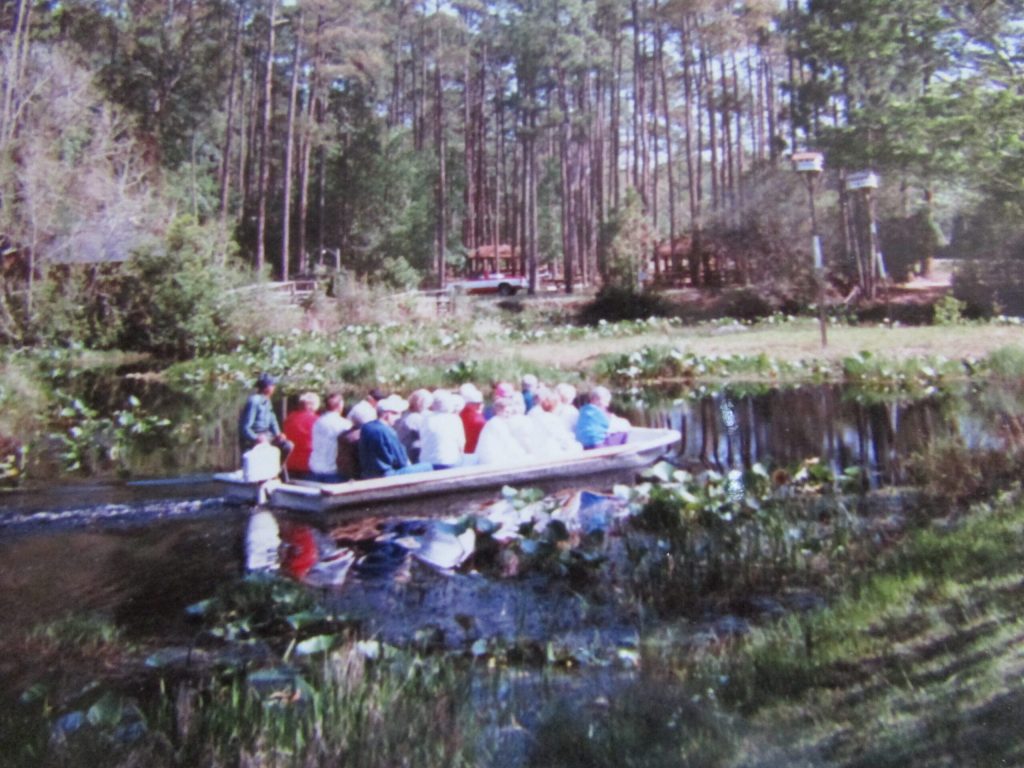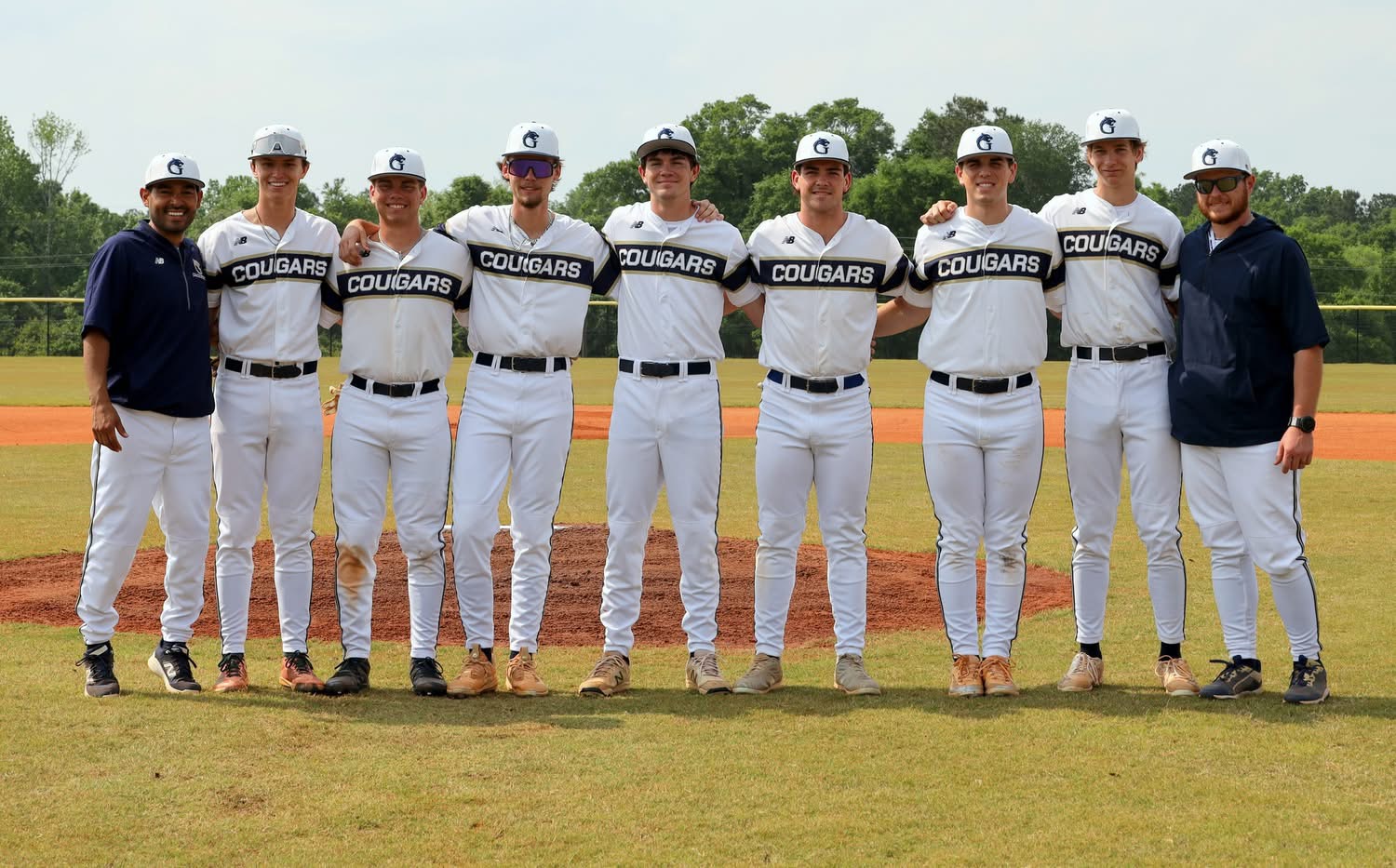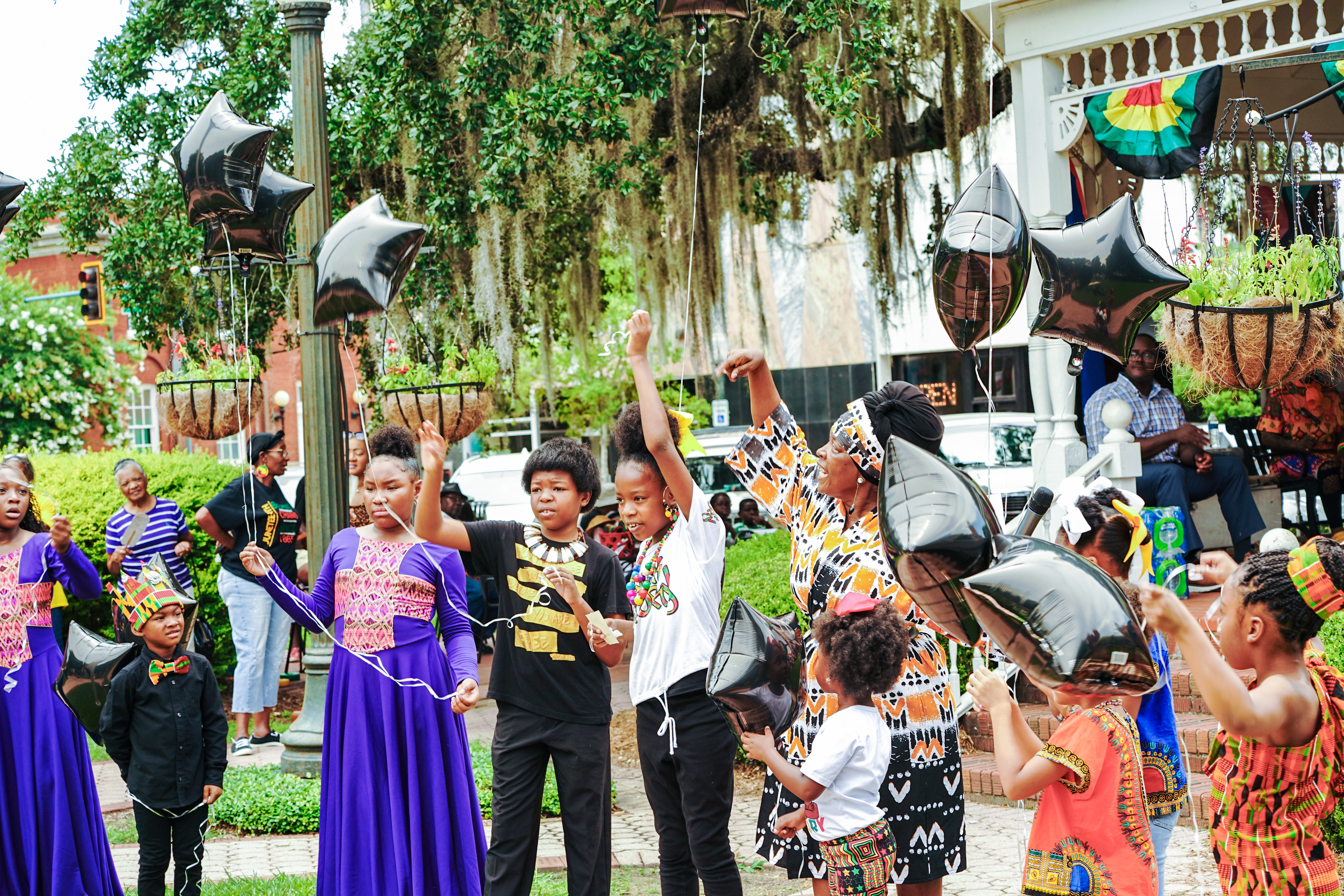Try Not to Get Lost! Part 1 of 5
Published 10:45 am Sunday, November 10, 2024

- Visitors get a glimpse of the swamp from the swamp boats. Most are captioned by descendants of the original swamper families.
|
Getting your Trinity Audio player ready...
|
Down deep, in Southern Georgia, there lies a huge, dark, threatening swamp. This is no ordinary place because it is the largest freshwater basin in the United States. It dominates 450,000 acres. That means it is over 700 square miles. It covers part of the southeastern corner of our state, then stretches across Florida’s northern border. Let me help you picture the size of this unusual area by telling you it is 25 miles from east to west and 40 miles from north to south. Because of its size, and other reasons, it is one of the best-known wetlands in the United States. If you want to go from one end of the swamp to the other, or from island to island, the only way is to use a pole boat or a shallow skiff, for there are no roads in the Okefenokee.
This area is called Okefenokee, after the Seminole Indian word meaning, “land of the trembling earth.” The name aptly describes the way the land in the swamp is because when you step on it, it shakes. For in this murky bog, the gases escaping from the rotting trees and plants, makes the 15-foot thick, swamp floor quiver. This, and the fact that it is actually floating on top of the water, makes it barely able to support the weight of a human.
There are about seventy of these floating islands which covers six percent of the water’s surface. Cowhouse Island is the largest, being nine miles long and two miles wide. The swamp is made up of these islands, plus moss draped cypress bogs, scrub vegetation, prairie wetlands, waterways, and open lakes. Technically, all of this makes Okefenokee not a swamp but a peat bog. Rising one hundred and thirty feet above sea level, it is higher than some surrounding areas. Its waters are not brackish nor stagnant or muddy, but pure and moving. It is one of the oldest freshwater ecosystems in the United States.
Okefenokee serves as the headwaters for two rivers. The swamp sends the river fed Okefenokee black water, out to the Atlantic by way of the St. Mary’s River. This waterway is known as one of the most crooked rivers in the world. Part of it divides Georgia from Florida as it flows one hundred and seventy-five miles from the swamp to the ocean. Then there is the Suwannee River, made famous in songs, that sends its waters into the Gulf of Mexico.
However, there is more to the swamp than the watery area. You go from this spot into a huge South Georgia pine forest. Here, is a totally different environment altogether. Now, you will find ancient, eighty-foot cypresses rising out of the black water. Even the climate changes, it is cooler and crisper with a silence that is so deep, it actually hurts your ears. Then, a breeze will come. It stirs the Spanish moss that is draped over every tree, keeping the swamp dark even on a bright summer day. Now, there is the trace of an echo under this protected canopy. There are owls hooting because it is so dark in the middle of the day that they think it is night.
If you were a bald eagle, circling overhead, the Okefenokee Swamp might look like a giant saucer filled with brown tea. This saucer swamp was once a part of the Atlantic Ocean. As the sand bars built up, the rising ridge cut off the seawater and the ocean gave way to a fresh water, clear lake, which then gave way to vegetation. Of course, this took millions of years but in archeological time, Okefenokee is a new born.
The black water that looks like silver where the sunlight hits it, owes this phenomena to tannin, an “after product”, of decaying vegetation. In the 18th century, sailors valued Okefenokee’s black water because it would stay drinkable even on long voyages. Records have it that these waters can effectively mummify corpses, but the alligators most likely would eat them first.
Such an ecological wonder, with its bizarre landscapes, and exotic wildlife was bound to draw human habitation. This has included Native Americans, pioneer spirited early settlers, canal builders and lumbermen. However, most of the older evidence of human habitation has been claimed by nature and no longer exists.
It is also known that ancient mound builder tribes lived here as they have left their mark on Okefenokee. There were 65 mounds discovered in the swamp that dated back 4,000 years. Archeologists found skeletons and relics that have led them to conclude that these mounds served as sacred burial grounds for high standing members of these ancient communities and that tribes held religious rituals on these sites. Two of the most accessible mounds were on Chesser Island in the east and Billy’s Island in the west.
At the time of earliest European exploration, the Timucuan Indians inhabited the swamp. They then gave way to the Yuchi, who were then followed by the Seminoles and Creek Indians in more modern times. Homesteaders started to come and colonize around 1800.
Two famous European expeditions were that of Spanish explorer Hernando de Soto in 1539, and then Quaker naturalist, William Bartram in 1773. In studying his notes, it seems that he passed by the swamp but did not enter it. However, while he was walking around it, he documented tales which his party heard about a race of giant people said to have lived within the swamp. We will learn more about this in a following column.
Trappers and traders, eager to exploit the fur rich Okefenokee, built up thriving businesses obtaining pelts and skins from the Creek Indians. When the Seminoles broke away from the powerful Creek Nation and moved to the swamp, they became the first in a long line of independents and renegades to inhabit the Okefenokee.
Early in the 1800s, Europeans began encroaching on the Seminole Indian Territory and the land wars began. From 1836 to 1838, there were many incidents in the area. For the protection of the settlers, roads and forts were built by the Georgia troops around the perimeter of the swamp.
Other swamp islands are named to reflect more of the swamp’s colorful past. During War Between the States, many Army deserters from both sides, went into the swamp to hide. The island known as Cowhouse Island was where the residents hid their cattle from these marauding troops.
Many locals feel that there should be an island honoring moonshiners, another outlaw swamp breed. If there was to be a name, it would be Autumn Leaf, a 190-proof swamp concoction said to make you change color when you drank it.
This forbidding land also attracted the reclusive type of person, many of whom were either escaping from injustice or justice. These became known as the swampers. They soon replaced the Indians and started a new way of life. These hardy pioneers were very adept at getting their pole boats or shallow draft skiffs through the fern lined channels and not get lost. They did not believe in marking the trail because this would lead outlaws to them. It is said that they named each alligator in the swamp.
In 1889, the Suwannee Canal Company bought much of the swamp from the state intending to drain out the water and raise crops. After spending millions of dollars to build twelve miles of a still water canal, they abandoned the effort, which was the brain child of an Atlanta lawyer, Henry Jackson. It is now called Jackson’s Folly.
The next endeavor to tame the swamp came from the Cypress Company of Waycross. The lumber industry and the railroads had mostly a bad effect on the swamp. The company saw a bonanza in lumber, especially on Billy’s Island. They took around nine million board feet of virgin cypress from the swamp during the life of this industry and they never replanted. Unfortunately, back in those days, our ancestors thought that all of the abundance that they saw would last forever. Therefore, they did not think about the future or conservation.
During this time is when a newly built railroad system brought big changes to the area. It was constructed around the perimeter of the swamp. It provided a connection whereby the lumber would be placed on intersecting trains that went up North and out West.
The logging industry flourished for around two decades. Then, all of this industry left in 1942, when the process of turning the Okefenokee into a wild life refuge began. Now, when you are looking at the remote island wilderness, it is hard to imagine Billy’s Island was once a boomtown which had a hotel, school, store and even a movie theater. At one time there were 600 people living and working there. A devastating fire destroyed almost everything, even the logging industry, and what was left, nature took care of. However, you can still make out chimneys and a few cast iron stoves and maybe find a wash tub or two.
The idea of turning the Okefenokee area into a protected wilderness began back in the late 1920s. There were several naturalists who came to work in the swamp and noticed that something had to be done or the Okefenokee, its plants and animals and unique eco system, would be gone. The area did eventually become a National Wildlife Refuge. However, when they saved the swamp, they couldn’t save the swampers’ way of life. But this was already on its way out.
The swampers weren’t farmers. They didn’t have jobs in town either. The swamp was their home and their livelihood and they respected it. Theirs was a hard life but it was a good life. Their lifestyle was like that of the Native Americans. When they needed something, they went into the swamp and got it. They didn’t try to destroy everything. They just took what they needed. They also respected the dangers of the swamp and the creatures that lived there. Thus, the swamp formed the character of its people. It influenced their manners, customs, and their language which was one that was all their own. All of this was because of the effect of their isolation and their somewhat primitive existence.
The swampers lived and developed their own way of storytelling. Books, magazines and newspaper seldom found their way into Okefenokee homes. Many wonderful tales of the olden days were told around firesides and in camps by the older hunters. They also created their own poetry, philosophy on life and their own type of humor.
When it came to their social life, hog killing and cane grinding were the reasons for a square dance. However, these residents could always find a reason to get together and have celebrations which they called frolics. These were held all year round. Those who could play the fiddle, were most popular as well as their instruments. The next instrument was the banjo. Some of their favorite songs, which they made up themselves, both the music and the words, were: Sally Goodin, Cotton-eyed Joe, and Molly Put The Kittle On and One-eyed Gopher.
The swampers also loved what they called “hollerin and yodelin”. Hollerin was useful for more than singing. It was the way that the swampers communicated with each other. They had signals for different types of dangers and also for other things like watching for a friend who was coming your way through the swamp.
From 1916 to the mid-1930s you could see the changes in the swampers’ way of life. One by one, each winter the old timers who had sung so many songs and even told more stories, were dying off. Now you could hear the sound of radios, even on the islands, that were deep in the swamp, where once the only music heard was that made by the residents. The children from the Okefenokee went to public schools in the nearby communities of Folkston, Waycross, and Fargo, Georgia.
Most of Okefenokee is now a National Wildlife Refuge that was set aside by President Franklin Roosevelt in February of 1935. This is when, by executive order, he made the Okefenokee Swamp a National Wildlife Refuge. The area included portions of Charlton, Clinch, and Ware Counties. When this happened, the residents had to pull up roots and leave what was their birthright. For some it was a very traumatic experience.
Now, hundreds of varieties of animals and plants make their home. This includes everything from black bears, flying squirrels, wood snakes, and alligators to exotic orchids. The swamp is one of the country’s largest natural bird refuges, being the home to more than 230 species of birds, including both song birds and birds of prey, wading birds and migrating waterfowl, such as deer birds and egrets.
Fifty species of reptiles like water moccasins and rattlesnakes live alongside of other venomous snakes. Amphibians, such as many types of frogs and some 40 species of mammals are neighbors. Several of these residents are on the Federal Endangered Species List.
In this large wilderness of marshlands, the wet climate is perfect for the growth of the green lily pads, wild orchids, bald cypress trees and Spanish moss. However, there are also thousands of plant species, some barely large enough to see without a microscope, that are listed as endangered who are clinging to keeping their type alive in the swamp.
Join me next week when we will visit the swampers.





